
Commercial Operations Tips Exclusively for Pharma Backed by 30 Years of Experience
Sales incentive compensation and sales force optimization can be quite challenging, particularly in the complex pharma, biotech and medical device industries. Here are some tips powered by our over 30 years of experience to help guide you through some of these intricate processes.
Check back as we’re continually adding new tips!
April 2024
Just because a physician prescribes in high volume does not make the physician a good target for selling activity
One of the primary ways biopharma companies select physician targets is based on volume, pursuing those who prescribe the most in the therapeutic class. However, just because an HCP prescribes in high volume does not mean that the HCP will be amenable to prescribing your product. Thus, physician targeting must consider behavioral elements such as loyalty strength, behavior segment, prescribing pattern, etc.
February 2024
Considering raw potential alone disregards how some competitive scripts are easier to convert to our product than others
When incorporating potential into a sales incentive compensation plan, biopharma companies often consider all potential to be equal. However, not all potential is equal—for example, it is much harder to convert potential against which our managed care status is disadvantaged instead of favorable. Thus, two territories can have the same amount of raw potential, but very different amounts of that raw potential that can realistically be converted to our product.
November 2023
Avoid the five-point scoring model for evaluating performance on management by objectives (MBOs)
One of the most common methods used to evaluate performance on management by objectives (MBOs) is the five-point scoring model. However, too often, managers award representatives the same score, which does not capture relative performance differences. Instead, managers should be given an odd # of points to award across representatives to force differentiation of performances.
September 2023
Make sure the President’s Club contest design doesn’t result in winners being decided in a single quarter
President’s Club is one of the highest honors a sales representative can achieve and recognizes exemplary sales performance throughout the whole sales year. However, if not designed correctly, President’s Club winners can be decided in a single quarter instead of requiring top performance the entire year. This ultimately works to demotivate & disengage the rest of sales force, who sees President’s Club as unfair and rigged.
July 2023
Check how many accounts/prescribers are driving the aggregate territory-level sales of your sales force
Oftentimes, aggregate sales at the territory-level mask the # of accounts/prescribers that are actually driving that business. If a few large accounts are driving nearly all of a territory’s business, then the representative should have a good deal of prospecting time available since these few large accounts can only be called on so many times. However, this may not be readily apparent without considering how many accounts are driving the business, allowing the representative to hide behind the aggregate sales rather than prospect.
May 2023
Only use a straight commission sales compensation plan when differences in volume and opportunity across territories are small
One of the most popular types of sales incentive compensation plans is a commission-based plan due to its simplicity. However, a straight commission plan in which all territories get the same commission rate per unit should be used sparingly. If territory differences in volume and oppotunity are large, then a straight commission plan will place some territories at an unfair advantage, demotivating the rest of the sales force.
March 2023
A sales compensation plan that sees the same sales representatives on top plan period after plan period is likely inequitable and biased
If a sales compensation plan is designed well, then the plan should not have the same top performers every plan period. Instead, a good plan ensures that all sales representatives have equal opportunity to earn top bonus. The exact same sales representatives always coming out on top every plan period is a good indication of territory bias in the sales compensation plan design.
January 2023
Make sure payout differences across territories are not so large that they cause dissonance in your sales force
A sales compensation plan should pay a sales force’s top performers very well, but they should not be overpaid. If the payout differential between top and middle performers is too large, then this often leads to dissonance in the sales force. Rather than being motivated to earn those top payouts themselves, other representatives often feel underpaid because the performance difference is not equivalent to the payout difference.
October 2022
Staying with the same sales incentive compensation plan for too long ultimately costs companies sales
Many biopharma companies end up staying with the same sales incentive plan for too long, ultimately costing them sales. The plan should change as the product moves across the life cycle, but many companies change the plan too late. Even when rooted in a life cycle stage, the plan should change every few years to prevent the sales force from growing stagnant and keep up levels of excitement.
August 2022
Make sure your sales compensation plan does not consider past sales alone when balancing time to be spent on maintenance versus prospecting
A biopharma sales incentive compensation plan must be designed to balance the sales representative’s time on prospecting versus maintenance. However, too often, companies only consider past sales in determining time needed on maintenance without considering the number of accounts those sales came from. Considering the number of accounts allows for better allocation of time on growth versus maintenance since it takes more time to maintain 1,000 sales from 100 accounts than 10 accounts.
June 2022
A sales compensation plan should never be designed so that a portion of the sales force earns no bonus
A common benchmark in biopharma sales incentive compensation design advocates that 10% to 15% of the sales force should not earn a bonus in any given plan period. However, when representatives anticipate that they will not earn a bonus, they typically give up on selling partway through the plan period, which ultimately results in lost sales for the company. When sales people believe they can earn a bonus—even a small one—they stay engaged and drive sales throughout the plan period.
April 2022
Don’t run contests during the launch of a new product as they take attention away from the action being driven by the sales compensation plan
Oftentimes during a product launch, companies will run a contest as a supplement to the sales compensation plan to increase excitement and engagement for the launch. However, contests actually divert the sales force's attention from the excitement that should surround the sales compensation activities of the launch. In order to ensure a product gets as much traction as possible at launch, it is critical for the sales force’s efforts not to be divided between the sales compensation activities and the contest.
February 2022
Tying a sales force’s incentive compensation bonus to group performance (i.e., nation or region) does not drive sales
Sales people are most motivated when they have as much direct control as possible over the bonus they earn. When a component of the sales compensation plan is based on group performance, the individual sales representative is not as committed or engaged. For example, with a national or regional performance bonus, if everyone is responsible, no one is responsible.
December 2021
Design the payout curve for your mature brand to be steep below 100% attainment for goal-based plans
In life sciences, sales for mature products tend to be rather stable, meaning goals should be able to be set quite accurately. This accuracy means the payout curve can be designed to be steep below goal in order to highly motivate the sales force to achieve their goals. This is especially true if there are multiple products in the bag—we don’t want sales representatives easing up on the mature product because its sales are less likely to fluctuate greatly.
October 2021
Don’t include a "step" at 100% goal attainment in your payout curve as this exacerbates the consequences of goal setting inaccuracies
To incentivize the sales force to achieve goal, some biopharma companies often include a "step" at 100% goal attainment to considerably increase payout. However, due to the difficulty of setting accurate goals, including a "step" at goal makes a small inaccuracy in the goal setting cause a large inequity in payouts. Including a "step" at goal does not motivate as well as a steeper curve towards goal because even if goals are slightly off, reps still earn motivating payouts, resulting in better overall performance .
August 2021
A bell-shaped frequency distribution of payouts does not mean a sales compensation plan is equitable
The fairness of a biopharma sales compensation plan is often evaluated by analyzing if payouts follow a bell-shaped curve (i.e. a normal distribution). However, payouts that follow a bell-shaped curve just mean that a small portion of the sales force earned large bonuses, a small portion earned small bonuses, and the majority earned average bonuses. For example, a compensation plan that awards bonuses based on height would follow a bell-shaped curve if there is a good assortment of people, but that does not make the plan equitable.
March 2024
Don’t set call plans based on response curves as response curves have high amounts of statistical error
Biopharma companies often assign call plan frequencies to HCP targets by statistically estimating the point of diminishing returns on a response curve. However, response curves have high amounts of statistical error and the highest error is at higher call levels, where there are the fewest data points. This means that the area that is most important for determining diminishing returns—and thus assigning call frequency—has the highest error.
January 2024
Because of the importance of prospecting, a good sales force should have a proportion of its calls classified as “unproductive”
A sales call is considered “unproductive” if it does not produce or maintain business. However, a good sales force should have a portion of its sales calls classified as unproductive as unproductive calls are a necessary part of prospecting. The proportion of allowable unproductive calls varies from product to product based on life cycle stage, market share, etc.
October 2023
Because forced rank sales compensation plans don’t retain performance differences between ranks, they often do not pay for performance
For a sales compensation plan to pay for performance, representatives who perform similarly should be paid similarly and representatives who perform differently should be paid bonuses that reflect that difference. However, ranks are unable to capture relative performance differences, so the difference in rank does not equate to the difference in performance. Thus, forced rank often does not pay for performance as adjacent ranks could be very different in performance but earn similar bonuses or vice versa.
August 2023
Do not design the payout curve for your post-launch product to be steep below 100% attainment for goal-based plans
Oftentimes, pharmaceutical and biotech companies set an optimistic national goal for a post-launch product. This optimism paired with the inevitable uncertainty around this life cycle stage means that territory-level goals are more difficult to set accurately. Accordingly, the payout curve should be designed to ensure all sales representatives are well rewarded even when they miss the mark a bit. As a result, the payout curve should not be steep below 100% attainment.
June 2023
Though seemingly interchangeable, goal and quota do not actually mean the same thing
The two most common terms used to describe how much a territory is expected to contribute to national sales—goal & quota—are often used interchangeably. However, the terms goal and quota are actually not the same as they evoke very different connotations. While goal has a positive connotation of something to aspire to, quota has a negative connotation of something imposed upon someone, thereby making goal the preferred term.
April 2023
Make the sales compensation plan for your launch product start immediately with large payouts and then slow down
For launch products, sales compensation payouts should begin immediately and pay high amounts for initial sales. This is because even if launch sales fall below expectations, sales representatives will stay engaged & keep pushing because they can still earn motivating payouts. Compensation payouts should then slow down at higher performance levels to ensure fiscal responsibility and prevent a large differential in payouts across territories.
February 2023
A sales compensation plan should not only be simple to understand, but should also have a simple relationship between action and bonus
If your sales representatives sell an additional 10 Rx this month, will they easily be able to determine the additional bonus they'll earn? If the answer to this question is no, then your sales compensation plan does not meet all of the criteria of simplicity and is not motivating your sales force as much as it could be. For a sales incentive compensation plan to truly be simple, a sales person must be able to determine how a change in performance will translate to a change in compensation.
November 2022
Make sure a product's seasonality or cyclicality is taken into account in the design of the sales compensation plan
In the biopharma industry, the sales of many products follow a seasonal or cyclical pattern, peaking at particular moments during the year. This seasonality or cyclicality must be taken into account in the sales compensation plan design to ensure the plan is driving the right behavior at the right times of year. If seasonality or cyclicality is not taken into account in the plan design, then the company runs the risk of the sales force blowing out its numbers or heavily pushing the product in the wrong part of the year.
September 2022
Make sure your sales compensation plan is rewarding for current performance rather than past performance
For most biopharma products, a portion of any given territory’s sales would be retained without any selling activity, what we refer to as the retained base. Thus, the sales representative is responsible for sales above the retained base; however, too often, companies pay more for large retained base sales than for sales above the retained base. Plans that reward for large retained base sales are plans that ultimately reward for past performance and thus do not drive sales as much as they could.
July 2022
Tying a representative’s sales compensation bonus to market share metrics does not engage the sales force as well as sales metrics
Sales compensation plans that utilize market share as a measure of performance are not as motivating as those based directly on sales. This is because market share depends not just on the sales representative’s performance, but also the competition and therapeutic class trends, thereby limiting the control sales representatives have over their bonus. Thus, measuring performance on market share is not as motivating as measuring performance on direct sales, which a sales representative has much more direct control over.
May 2022
Don’t rely on sales force surveys or anecdotes alone to assess the effectiveness of your sales compensation plan
Biopharma companies often utilize sales force surveys and anecdotes to evaluate their sales compensation plan's effectiveness. However, sales force surveys and anecdotes tend to be subjective and self-serving, with representatives seeking to influence the design of the plan in their favor. Thus, sales force surveys and anecdotes provide biased results that make them unreliable and not an accurate representation of plan effectiveness.
March 2022
Some of the most common retention strategies used in biopharma can actually work to demotivate your sales force
In order to encourage sales force retention, biopharma companies often utilize retention strategies such as stock options or hold-back. However, tying retention to something outside of the representative's control (stock options) or keeping something from the representative (hold-back) often causes disillusionment and resentment. Thus, these retention strategies can actually work against the company and achieve the very opposite of what they were designed to do.
January 2022
Setting goals based on territory trends penalizes top performers and rewards poor performers
Setting goals on territory trends penalizes fast-growing territories as they are expected to continue to grow quickly, resulting in these top performers becoming bottom performers. Similarly, territory trend goal setting rewards slow-growing territories as they are expected to continue to grow slowly, resulting in these bottom performers becoming top performers. This burden on fast-growing territories results in them earning less than their slow-growing peers despite having achieved superior performance.
November 2021
For most biopharma products, the payout curve for a goal-based plan should be steepest around 100% attainment
For most biopharma products, especially those in the mature-growth stage, the steepest part of the payout curve should be around 100% attainment—both above and below goal. Not only does this incentivize the sales force to work hard to achieve their goals since they get the highest return for their effort, but it also keeps them engaged even after they achieve goal. Furthermore, assuming performances follow a bell-shape around goal, then making the payout curve steepest around goal has the ability to motivate the most representatives.
September 2021
Post-plan period mitigation to correct for low sales force payouts due to unforeseen circumstances does not drive behavior
When something unexpected occurs in the marketplace, such as the COVID-19 pandemic or a hurricane, the sales force often earns low to no bonuses despite these circumstances being out of their control. To mitigate this, biopharma companies oftentimes will pay an additional bonus after the plan period to keep the sales force from being demoralized. However, post-plan period mitigation does not drive behavior during the plan period and can be inequitable as representatives who continued selling can receive the same corrective action as those who gave up. There are superior alternatives to post-plan period mitigation that are equitable, keep the sales force engaged, and drive sales during the plan period, such as contingency plans.
July 2021
If the sales compensation design limits the amount top sales representatives can earn, those sales representatives will likely stop selling
Certain sales incentive compensation plan designs or elements can leave top performers unable to earn more bonus once they have reached a certain level of performance. For example, consider a rank order plan or a goal-based plan with a cap—a sales representative who is ranked first or who exceeds the cap will disengage and stop selling. If there are members of the sales force—but especially top performers—who are disengaged and not selling with the highest level of effort, then the company is leaving sales on the table.
June 2021
Biasing payouts in favor of large volume territories causes dissonance in the sales force that ultimately leaves sales on the table
Sales compensation plans are often designed to ensure large volume territories get high payouts because of how much they contribute to national sales. However, this discourages small volume territories as they know they cannot earn the same bonuses as their large volume peers even if these small volume territories perform very well, causing them to disengage. In order to ensure that sales are as high as possible, every sales representative must be selling with the highest level of effort, which cannot occur when small volume territories are disengaged.
Clients We’ve Served
Join the companies that have revolutionized their sales compensation and sales optimization strategy with The Marketing Advantage, from small start-ups to multi-national corporations.
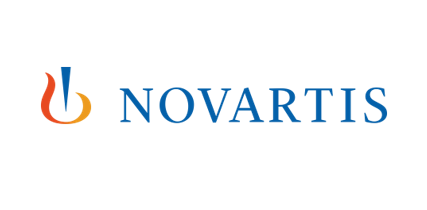





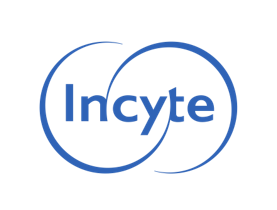

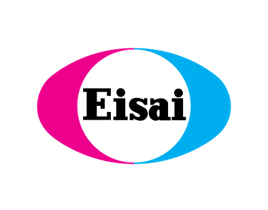









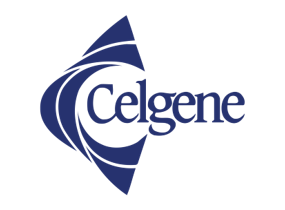








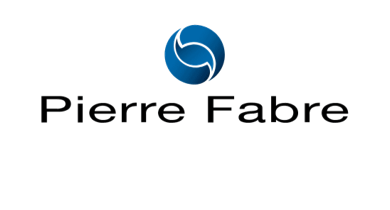



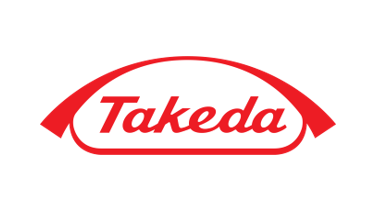

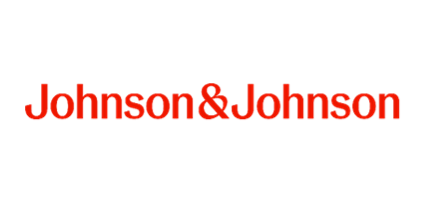
Additional Tools & Resources
Case Studies
Read some case studies with real biopharma companies that showcase the power of our sales compensation and sales optimization solutions.
Blog
Visit our blog for insights, advice and learnings dedicated to pharma, biotech and medical device sales and marketing.
Books
See what publications we’ve released over the years on pharma, biotech and medical device sales compensation and sales optimization.

